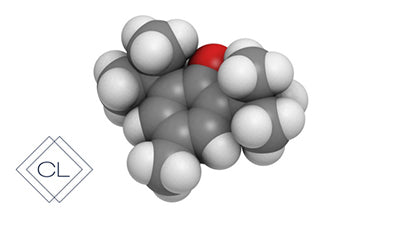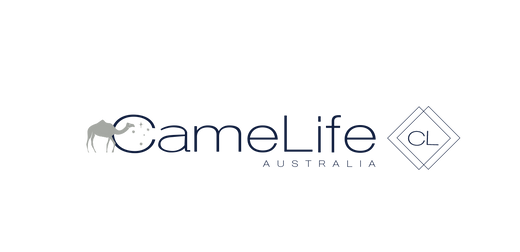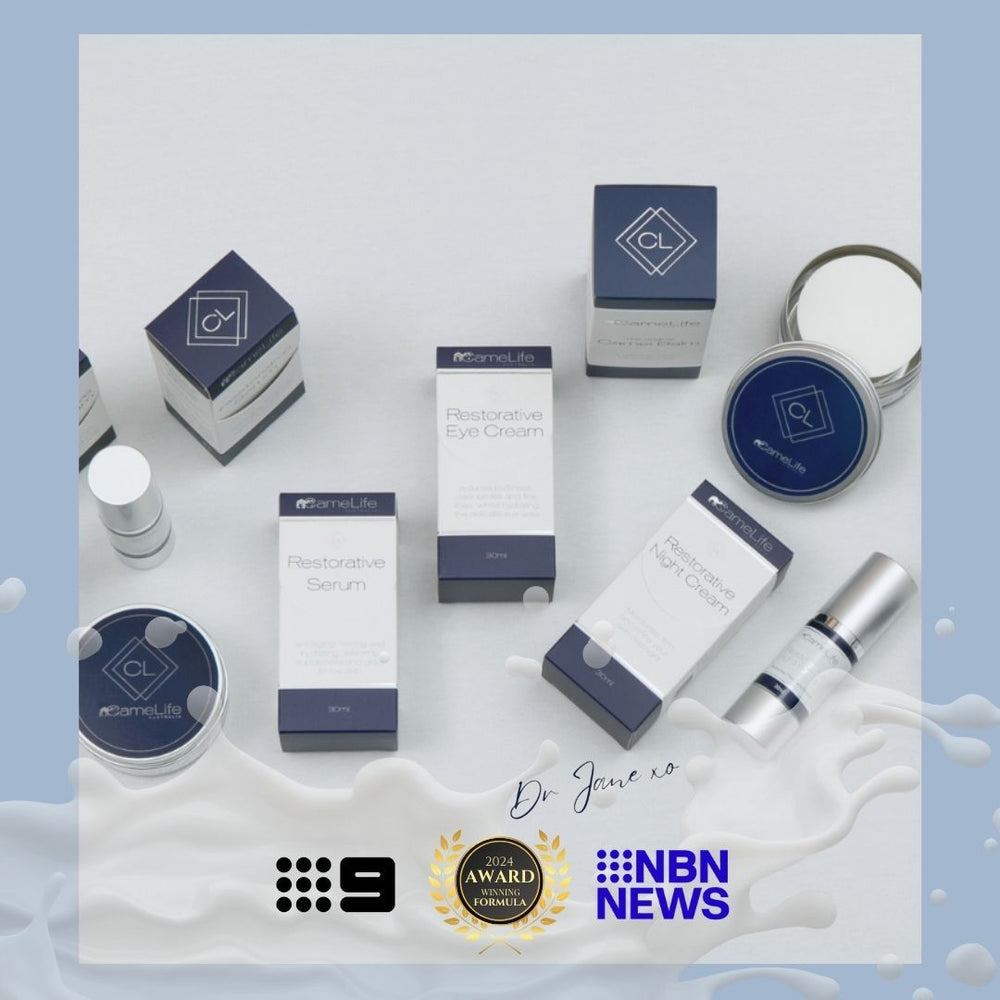All About Preservatives

Skincare Preservatives – CameLife’s Perspective
What are Preservatives?
We are often asked whether our products are all natural. Our answer is that, yes, the active ingredients are all natural. We don’t use any alcohols or the like. But the one place where we do use synthetic ingredients is in our preservatives.
CameLife co-founder Dr Jane Rose explains, “Our products are all about camel milk; we use camel milk both for its high absorbency which enhances the benefits of the natural oils and extracts that we add, but also the amazing natural skincare properties of the milk itself. So you have to remember that all of our products contain milk which we have to preserve. If the product doesn’t work for the customer and stay working, they won’t buy it. So we have to create formulae that preserve and retain the benefits of camel milk and the premium natural ingredients that we blend with the milk”.
According to the International Journal of Cosmetic Science (Vol 31. No 3. June 2009), “Preservatives are added to products for two reasons: first to prevent microbial spoilage and therefore to prolong the shelf-life of the product; second, to protect the consumer from a potential infection”. So lets delve into the world of skincare preservatives.
Controlling Microbial Activity
Most cosmetics and skincare products contain water as an ingredient. Although we don’t use water as an ingredient, but camel milk is no different from any other milk in its high water content. If a product containing water is left at room temperature, it is liable to become contaminated with bacteria. The water in which microbes can reproduce is known as “free water”. Like all living things, micro-organisms need water and nutrients to grow. Water containing products provide the perfect environment for bacterial reproduction. To keep perishables safe and fresh, free water must either be reduced or microbial growth must be controlled with a preservative.
Almost any type of preservative is much safer than none or than a natural preservative that doesn’t work well. Better a paraben than a dose of Staph! Synthetic preservatives like parabens and formaldehyde givers stop microbes from developing in water-based and milk-based products; finding a natural ingredient to do the same is a real challenge.

In our early products, we used DMDM Hydrontoin, a popular liquid preservative system used due to its broad-spectrum preservative properties. DMDM Hydrontoin is a formaldehyde giver. The big objection to formaldehyde givers is the potential toxicity of formaldehyde itself. But formaldehyde is safe to eat in low levels and we all do so every day. As an example, pears have one of the higher formaldehyde levels, at 60 ppm. A pear weighs about 100g and so when you eat one, you are swallowing about 0.006g of formaldehyde in a few minutes. Even the most determined user of skincare products will not get anywhere near as much formaldehyde into their body from a cosmetic than they will from eating a pear!
In the USA, the independent Cosmetic Ingredient Review confirmed the safety of DMDM Hydrontoin in three separate reviews, spaced several years apart. But CameLife recognises the conflicting articles on this preservative. Even though all of our products contain less than half of the dose rate of DMDM Hydrontoin allowed by the European Union, we are actively working on removing it from our formulae.
Camel milk has significant natural anti-microbial properties of its own, but to maximise its benefit we need to use raw camel milk. Our long term vision is to reduce the use of synthetic anti-microbials by harnessing the milk itself, but there are many challenges to doing so, not least the availability of raw milk where we manufacture.
Preserving Camel Milk
According to CameLife co-founder, Jane Rose “the biggest challenge with using camel milk as an ingredient is to preserve the milk itself and prevent it from going rancid. In our Restorative Range , we use butyl hydroxytoluene or BHT to do this”.
BHT is a fat-soluble synthetic compound commonly used to preserve foods and cosmetics. It slows down the autoxidation of ingredients in the product that cause changes in the smell, colour and taste and its primarily used to prevent fats from becoming rancid. The International Agency for Research on Cancer (IARC) lists the carcinogenic risk to humans from consuming BHT as being unclassifiable low. For more information try this well referenced article from the Huffington Post.

Self-Preserving
Have you read about self-preserving cosmetics? There are lots of brands out there which claim to have developed self-preserving skincare products, often by balancing the levels of water, butters and oils and beautiful, natural materials. It is definitely possible to create cosmetics made almost entirely of materials which are beneficial to the skin or hair, but can it be done with a milk based product?
The answer is yes, but this is a careful, delicate process, that takes time and effort to apply to more complex products. The dynamics of the formula must be carefully balanced in order to produce a beautiful product that is effective, practical and long-lasting, without having to utilise a synthetic preservative system. We are not there yet with our Restorative range; these are highly sophisticated, complex products that include premium ingredients. Meantime, two of our products are self-preserving.
CameLife’s Facial Cleansing Bar is a solid, naked product that has minimal free-water content. By careful formulation of the quantities of bergamot, avocado and coconut oil with natural coconut glycerin, we minimise the need for a synthetic preservatives. By adding citronella essential oil, a proven natural food preservative we have created an all natural self-preserving product.
It is much harder to do this with a cream, which has to contain more free-water. Balancing water and oil in our self-preserving Nourishing Body Mousse was a real challenge. A mousse is an aerated emulsion which binds the oil and water together.
The emulsion has to be loose enough to allow the ingredients to be absorbed by your skin, but bacteria really like to live between a loose interface made of oil and water particularly when there is air present. By balancing the quantities of oil, beeswax and cocoa butter and by using a special distilled plant botanical extract, we have been able to strike that balance. Even so, we manufacture the product in small batches, package in smaller volumes and limit the shelf life and use by date.
Preservative-Free Skincare?
The term preservative-free is often used by manufacturers of small volume skincare products, but it can be misleading because it implies that a product is completely free of preservatives. Nearly all water-based (and therefore milk-based) “preservative-free” products contain a preservative, just not one recognised by NICNAS in Australia or other regulatory bodies around the world. Honey, salt, calamine, cocoa butter, some essential oils all have preservative qualities when used in the right quantities, but there is nowhere near as much research on efficacy and dosage as there is with synthetic preservatives.

Acknowledged experts on preservative-free drugs and skincare Jon J. Kara and Donald S. Orth wrote, “usually, multiple-use aqueous consumer products in their current containers cannot be made preservative-free merely by removing preservatives from the formula”.
The question to ask with so-called preservative-free skincare products is how safe are they? Are they really preventing microbial growth throughout the life of your product?
The Future for CameLife
Currently 30% of CameLife products are self-preserved using natural ingredients and careful formulation. But preserving all of our products thins way is not as simple as just taking out the synthetic preservatives. The dynamics of each formula must be carefully balanced in order to produce effective, practical and long-lasting products, which are just as good as their preserved counterparts.
Developing premium quality products like our Restorative Serum using novel and unproven natural preservatives is a real challenge for a small business like ours. In fact, creating a self-preserving serum is a challenge that even the big brands haven’t overcome.
So our commitment to you is to be open and honest about the preservatives we use, including when the percentage of the ingredient is below what we are obliged to declare. Where possible, we will develop self-preserving products that eliminate synthetic preservatives.





Leave a comment